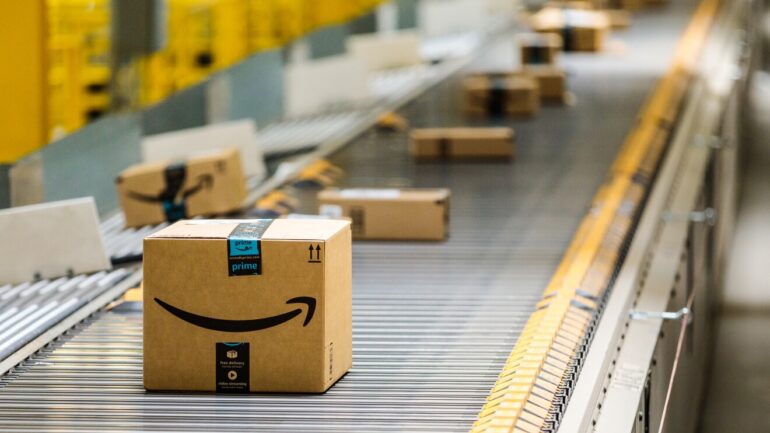TL;DR:
- Amazon is using artificial intelligence (AI) to improve delivery speed by reducing the distance to customers.
- AI is employed in various aspects of Amazon’s operations, including transportation and product search.
- Inventory optimization is a key focus, aiming to strategically place inventory units to reduce distance and increase delivery speed.
- Amazon’s “regionalization” initiative aims to deliver products from nearby warehouses for faster fulfillment.
- AI plays a crucial role in analyzing data and patterns to anticipate product demand and determine optimal inventory placement.
- Over 74% of customer orders in the United States are fulfilled from nearby distribution centers.
- Amazon recently introduced Bedrock, an AI model for building generative AI solutions on its web services platform.
Main AI News:
In a recent interview with CNBC on May 15, Stefano Perego, the Vice President of Customer Fulfillment and Global Operations Services for North America and Europe at Amazon, highlighted the pivotal role of artificial intelligence (AI) in various aspects of the company’s operations. Perego shed light on how AI is utilized to optimize transportation, including mapping and route planning while considering factors like weather conditions. Additionally, AI plays a critical role in assisting customers in finding their desired products during their Amazon searches.
One area where Amazon is currently prioritizing AI implementation is inventory optimization. Perego emphasized the complexity of the task of determining the optimal placement for inventory units, taking into account the reduction of distance to customers and the improvement of delivery speed. Achieving this goal is crucial for reducing the cost of services and enhancing customer satisfaction.
To meet these objectives, Amazon has been focusing on its “regionalization” initiative, which aims to deliver products to customers from nearby warehouses instead of distant locations. However, successfully implementing this strategy requires advanced technology capable of analyzing vast amounts of data and patterns to anticipate product demand and determine the most efficient inventory placement.
This is where AI comes into play. Through strategic placement of products closer to customers, Amazon can offer same-day or next-day deliveries, mirroring the convenience of its Prime subscription service. Perego revealed that the company’s efforts in this regard have been highly fruitful, with a staggering 74% of customer orders in the United States being fulfilled from nearby distribution centers.
In a significant development, on April 13, Amazon unveiled Bedrock, an artificial intelligence model designed to empower users of Amazon Web Services (AWS) in building generative AI solutions based on foundational models. This release showcases Amazon’s commitment to advancing AI technology and further integrating it into its range of services.
As Amazon continues to prioritize the utilization of artificial intelligence, the company is set to enhance its delivery speed and optimize the customer experience. With AI-driven inventory placement and regionalization initiatives, Amazon is revolutionizing the logistics industry and raising the bar for efficient and expedited deliveries.
Conlcusion:
The integration of artificial intelligence (AI) into Amazon’s operations, particularly in optimizing delivery speed and inventory placement, signifies a significant advancement in the market. By strategically leveraging AI technology, Amazon aims to reduce delivery distances, increase efficiency, and enhance the overall customer experience.
The successful implementation of these initiatives not only sets new standards for expedited deliveries but also showcases the potential for AI-driven logistics in the market. As other companies observe Amazon’s achievements, it is likely to inspire increased investment and adoption of AI technologies to stay competitive in the evolving market landscape.

